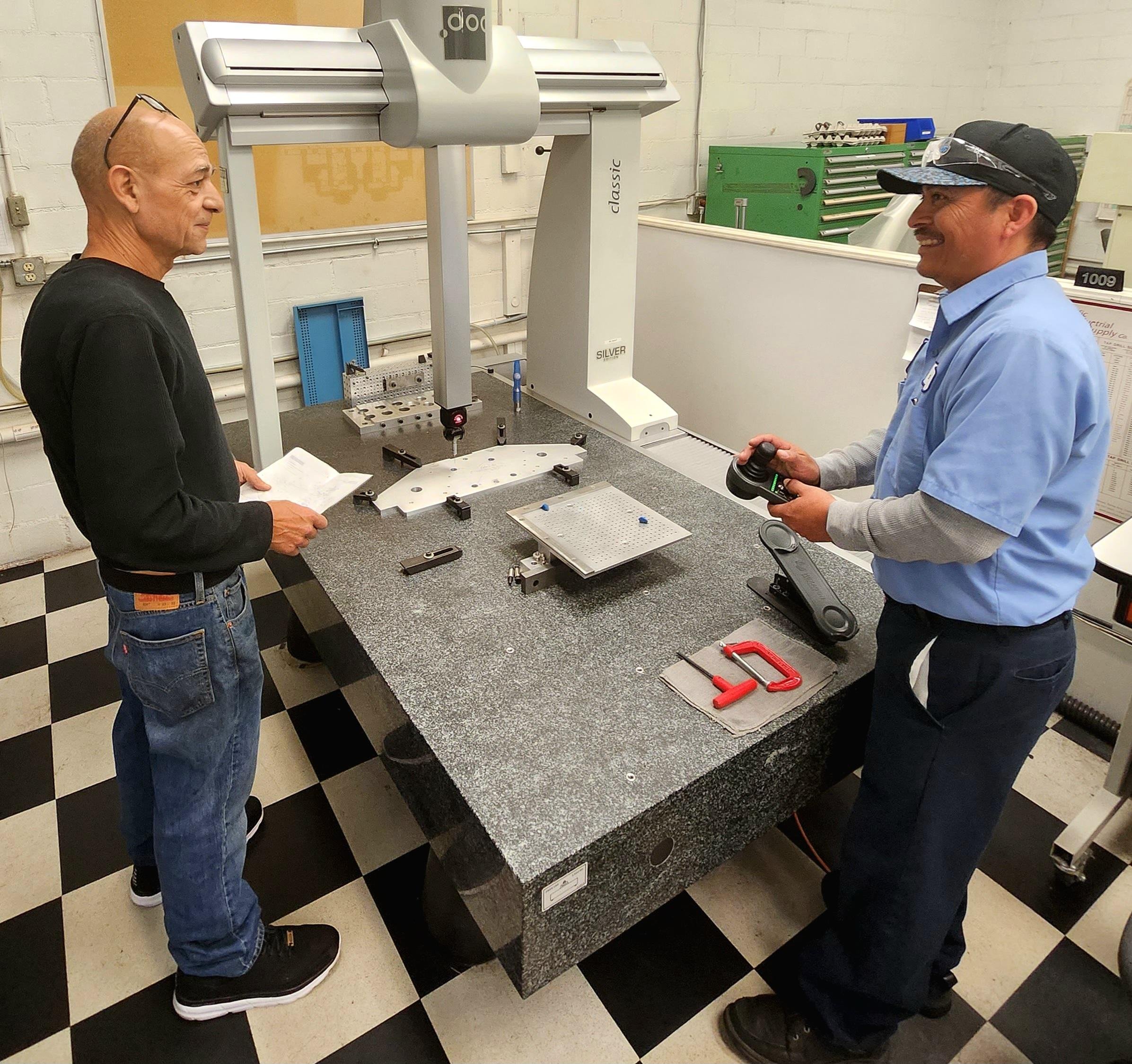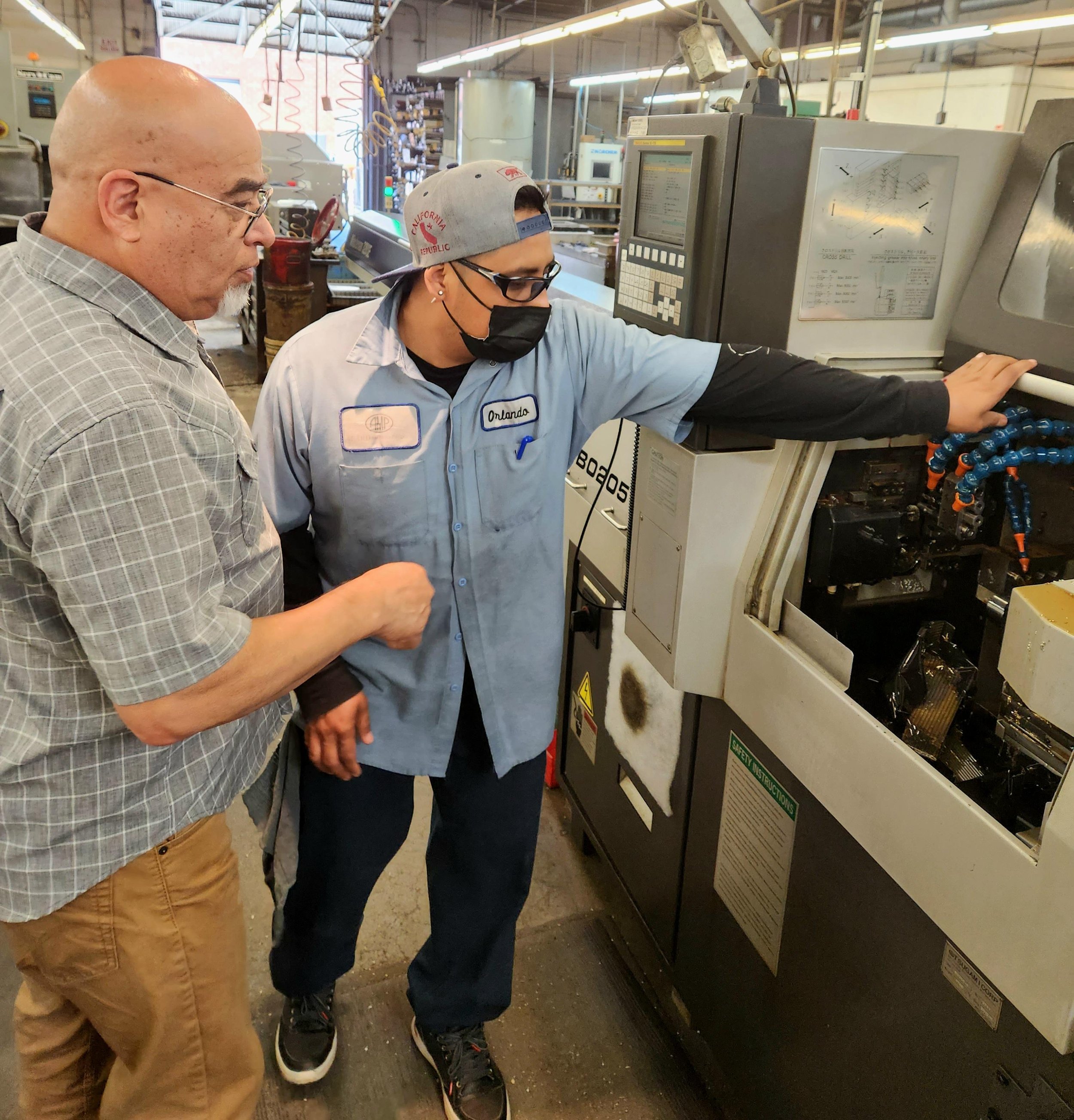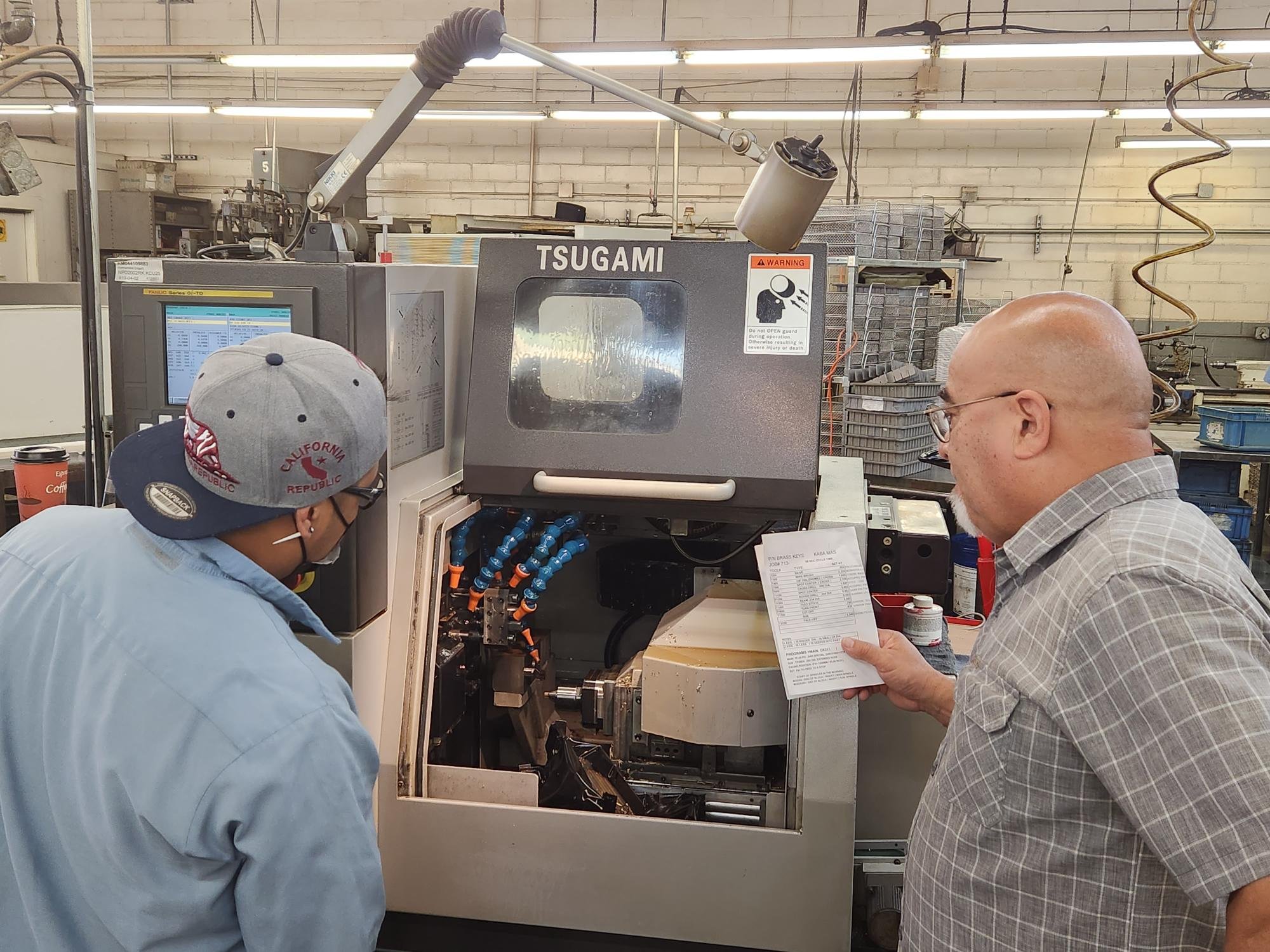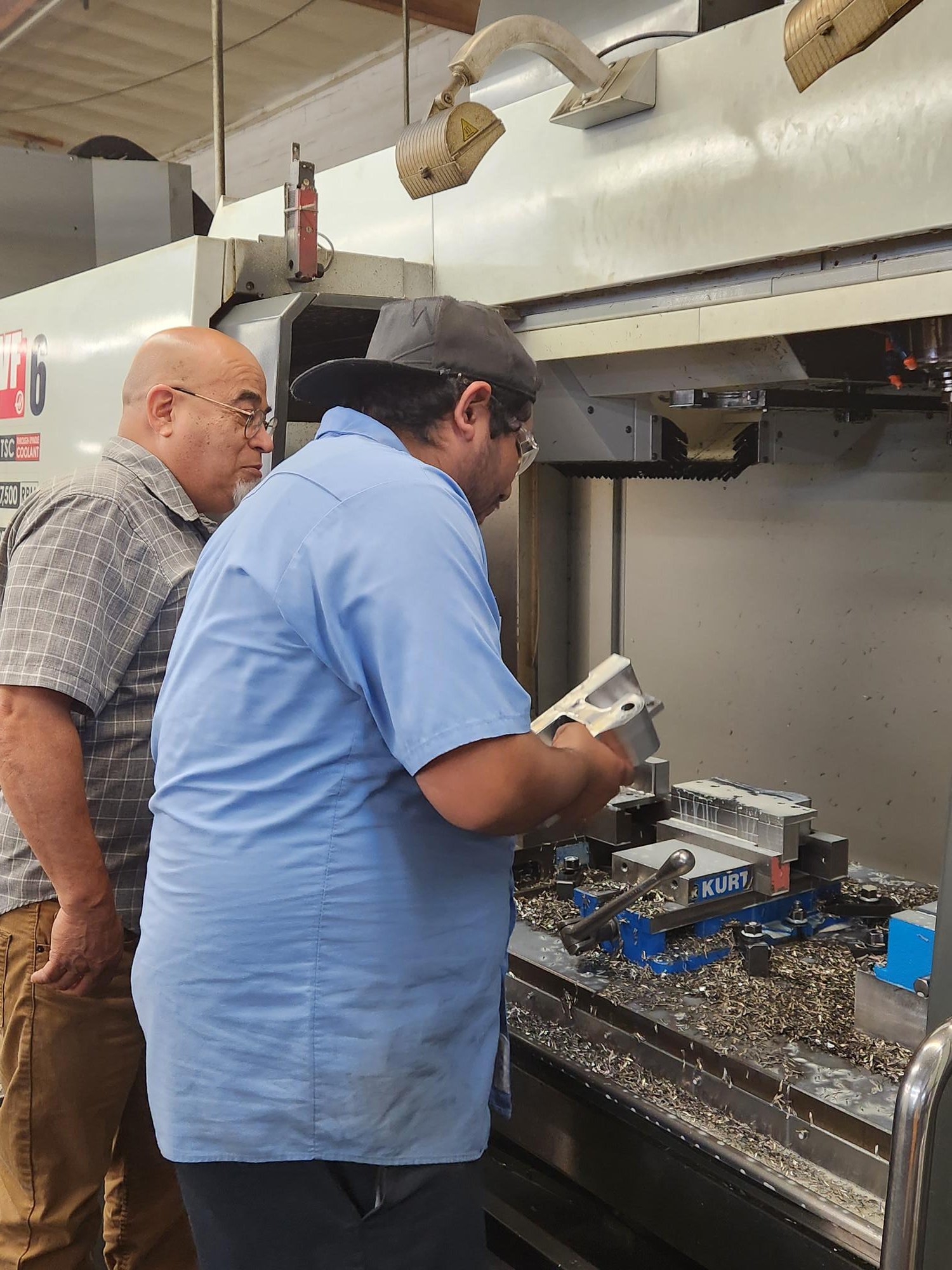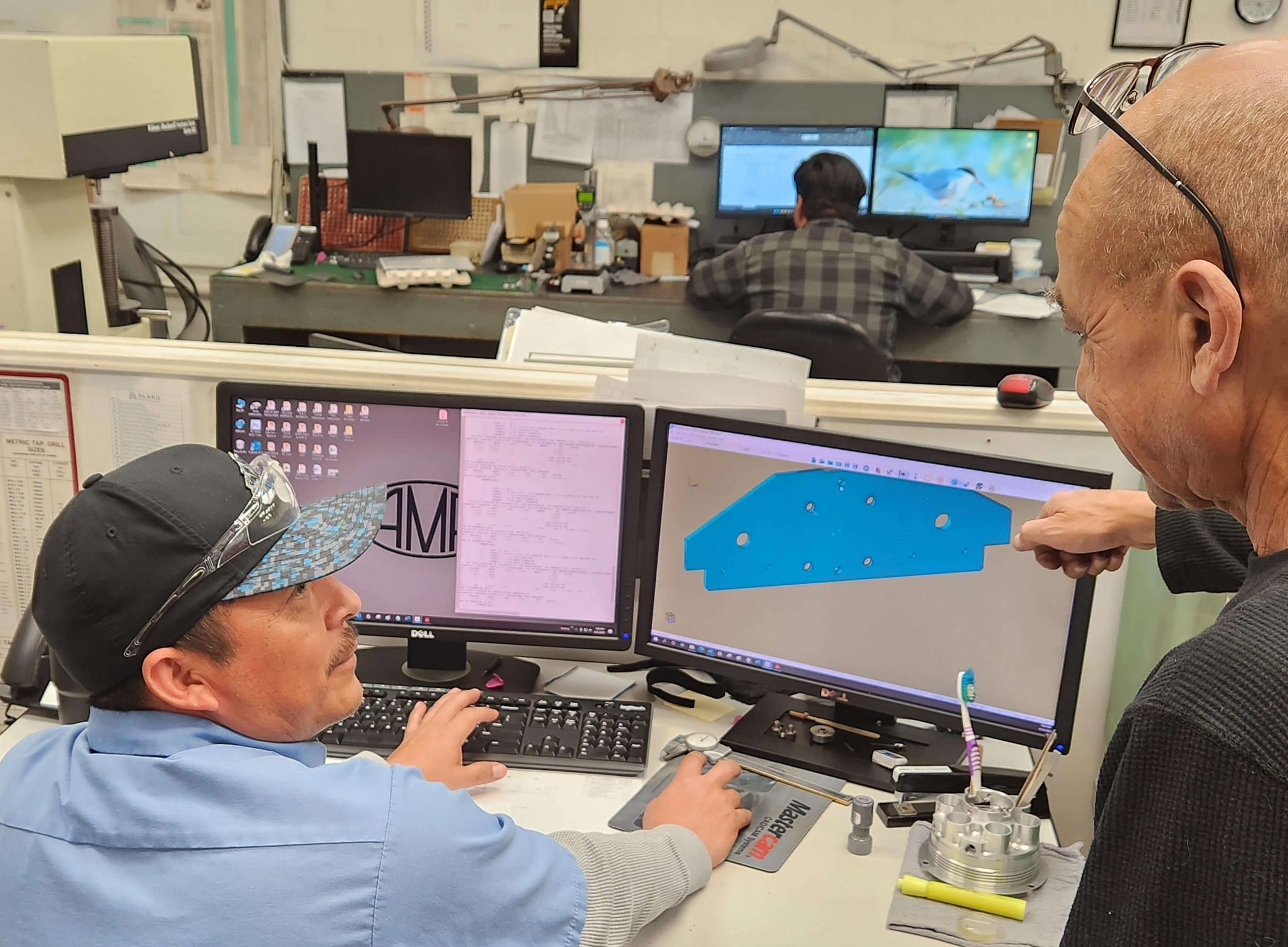Why Partnerships Between Engineers and Machinists Matter
The Alard Engineering team was recently at an event predominantly attended by engineers. We came away from the event with an interesting takeaway:
Many of the engineers had no idea what our precision machine shop did.
This knowledge gap makes sense when you think about it. Just as engineers can specialize in many different areas—there are systems engineers, propulsion engineers, hardware engineers, mechanical engineers, and more—machine shops also have varying areas of expertise.
It’s impossible for an engineer to know everything about a machinist’s work—and vice versa. That’s one reason we prioritize collaboration from the beginning of a project. A strong partnership between engineers and machinists can prevent costly inefficiencies, especially when working on critical applications like rockets and planes.
Taking a Step Beyond Transactional Relationships
When engineers and machinists come together, they can focus on the project and bypass their usual intermediary: supply chain representatives. These representatives tend to be finance-driven and don’t always approach projects with the level of engineering expertise required to deliver quality parts on time.
Of course, transactional relationships are sufficient for manufacturing some parts. For instance, if you need a simple bushing, there aren’t many details to discuss. But if you have a complex, tight tolerance, or high-value part, it’s important to engineer it for optimal precision machining. That often means bringing engineers and machinists together—ideally in person. This upfront collaboration is particularly valuable when developing a new part or product because both teams are in uncharted territory.
Our precision machine shop recently worked on a challenging project. After we emailed the customer explaining why their first article inspection didn’t pass approval, the customer sent a few people from their team to our facility to assess the situation. Once they saw us set up and run the operation and inspect the part, they understood the problem. They realized that manufacturing this part would require taking a step back to reprogram it, breaking the process into two operations, and conducting an entirely new setup. Had they never visited our shop, the project would have been stuck in limbo, unable to move forward.
Understanding a Part’s End Use
In American defense manufacturing, part designs typically go through many revisions. This process can be frustrating for customers. But the truth is that most revisions result from engineers and machinists coordinating to optimize a design for better, faster, and more cost-effective manufacturing.
Consider this scenario: An engineer designs a part with a tight tolerance on a specific feature, driving up the cost of the part. The machinist asks the engineer about the part’s end use, and the engineer provides context. As it turns out, the tight tolerance doesn’t serve much purpose. With this information, the machinist can recommend loosening the tolerance on that feature, saving the customer significant time and money without impacting the part’s functionality.
Many engineers come from great educational institutions, but they’re often taught to overengineer designs. We like to remind engineers that simple is always better than complicated. Reducing the number of operations, loosening unnecessarily tight tolerances, and pinpointing critical dimensions are key to creating a part more efficiently.
Alard Engineering: Much More Than a Precision Machine Shop
Alard Engineering is not your typical precision machine shop—we’re an engineering company. We implore you to leverage our extensive engineering expertise to design and manufacture your best parts.
We never shy away from complicated projects. We only ask our customers to have an openness to collaborate and a desire to build a partnership. We guarantee this approach will make a difference in the outcome of your parts.
Request a quote from our CNC machine shop today to learn what our 35 years of manufacturing experience can do for you.


